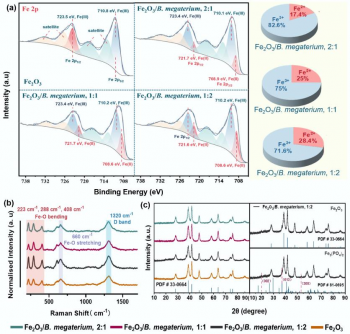Science
Innovative Biofilms Harness Solar Energy to Clean Pollutants

Recent research has unveiled a groundbreaking approach to environmental cleanup by using biofilms that harness solar energy to degrade pollutants. A study published in the journal Environmental and Biogeochemical Processes on September 15, 2025, by a team led by Bo Pan and Baoshan Xing from Kunming University of Science and Technology and the University of Massachusetts, demonstrates the potential of iron mineral-bacterial biofilms to significantly enhance the degradation of antibiotics such as tetracycline hydrochloride (TCH) and chloramphenicol (CPL).
The research highlights the ability of non-phototrophic microorganisms to utilize solar energy through interactions with minerals, particularly in environments where light is limited, such as soils and sediments. This emerging field of biophotoelectrochemistry offers a new strategy for both energy storage and pollutant mitigation.
Mechanism of Action and Findings
The study investigated the interaction between iron minerals, specifically Fe2O3 and FeOOH, and the bacterium Bacillus megaterium. Researchers focused on how these combinations could store and release electrons during cycles of light and darkness. The results indicated a continuous charge-discharge function, revealing a phenomenon described as “photovoltaic memory.”
As the bacterial density increased, so did the electron storage capacity. This was measured as the total accumulated charge, which rose from 2.87 μC·cm−2 to 4.08 μC·cm−2 after several cycles. The system demonstrated a clear differentiation between charge accumulation in light and release in darkness, achieving higher charge values when exposed to light.
Notably, the degradation efficiency of TCH and CPL improved by 66.7% and 46.7%, respectively, after just 60 minutes of light exposure. This enhancement was attributed to the synergistic relationship between the iron minerals and the bacteria, leading to efficient electron transfer and storage.
Implications for Environmental Remediation
The findings from this study suggest that the Fe2O3/B. megaterium biofilm system could revolutionize current methods of environmental remediation, particularly for soil and groundwater contaminated with antibiotics. The system functions as a “biological capacitor,” utilizing light-driven charge storage and release mechanisms without the need for continuous illumination.
This could lead to a cost-effective and energy-efficient solution for cleaning up polluted sites. The ability of these biofilms to operate effectively in dark environments presents a significant advantage, potentially enhancing the effectiveness of existing remediation strategies.
The implications of this research extend beyond just the degradation of specific pollutants. The study offers valuable insights into the broader use of solar-powered biofilms for treating various environmental contaminants in diverse ecosystems.
Funding for this research was provided by the National Natural Science Foundation of China and several other governmental research programs. As this innovative technology develops, it has the potential to offer scalable solutions to pressing environmental challenges, paving the way for a new era in sustainable pollution control.
The full study is available for reference at DOI: 10.48130/ebp-0025-0006.
-

 Science4 weeks ago
Science4 weeks agoALMA Discovers Companion Orbiting Giant Red Star π 1 Gruis
-

 Top Stories2 months ago
Top Stories2 months agoNew ‘Star Trek: Voyager’ Game Demo Released, Players Test Limits
-

 Politics2 months ago
Politics2 months agoSEVENTEEN’s Mingyu Faces Backlash Over Alcohol Incident at Concert
-

 World2 months ago
World2 months agoGlobal Air Forces Ranked by Annual Defense Budgets in 2025
-

 World2 months ago
World2 months agoMass Production of F-35 Fighter Jet Drives Down Costs
-

 World2 months ago
World2 months agoElectrification Challenges Demand Advanced Multiphysics Modeling
-

 Business2 months ago
Business2 months agoGold Investment Surge: Top Mutual Funds and ETF Alternatives
-

 Science2 months ago
Science2 months agoTime Crystals Revolutionize Quantum Computing Potential
-

 Top Stories2 months ago
Top Stories2 months agoDirecTV to Launch AI-Driven Ads with User Likenesses in 2026
-

 Entertainment2 months ago
Entertainment2 months agoFreeport Art Gallery Transforms Waste into Creative Masterpieces
-

 Business2 months ago
Business2 months agoUS Government Denies Coal Lease Bid, Impacting Industry Revival Efforts
-

 Health2 months ago
Health2 months agoGavin Newsom Critiques Trump’s Health and National Guard Plans









